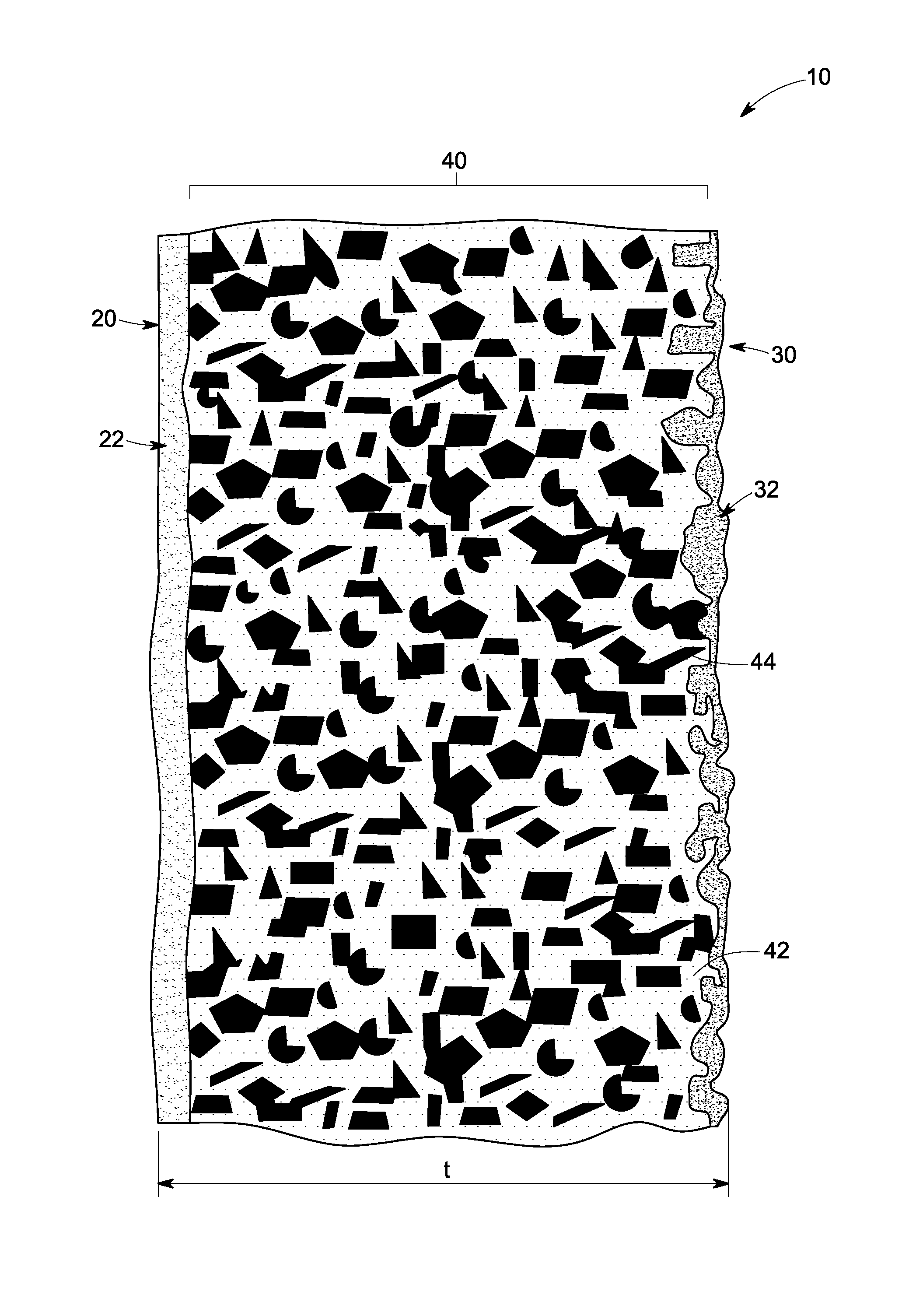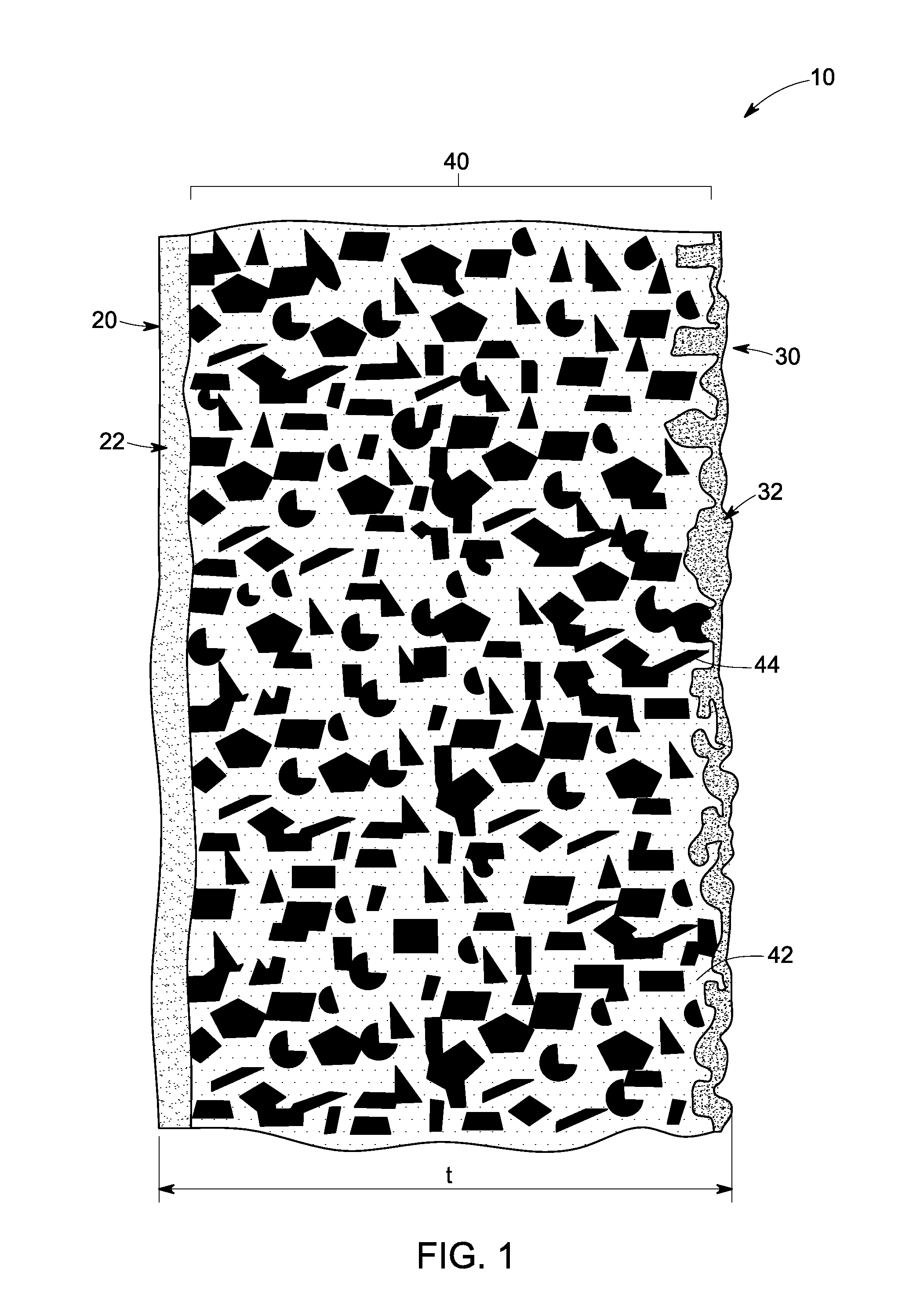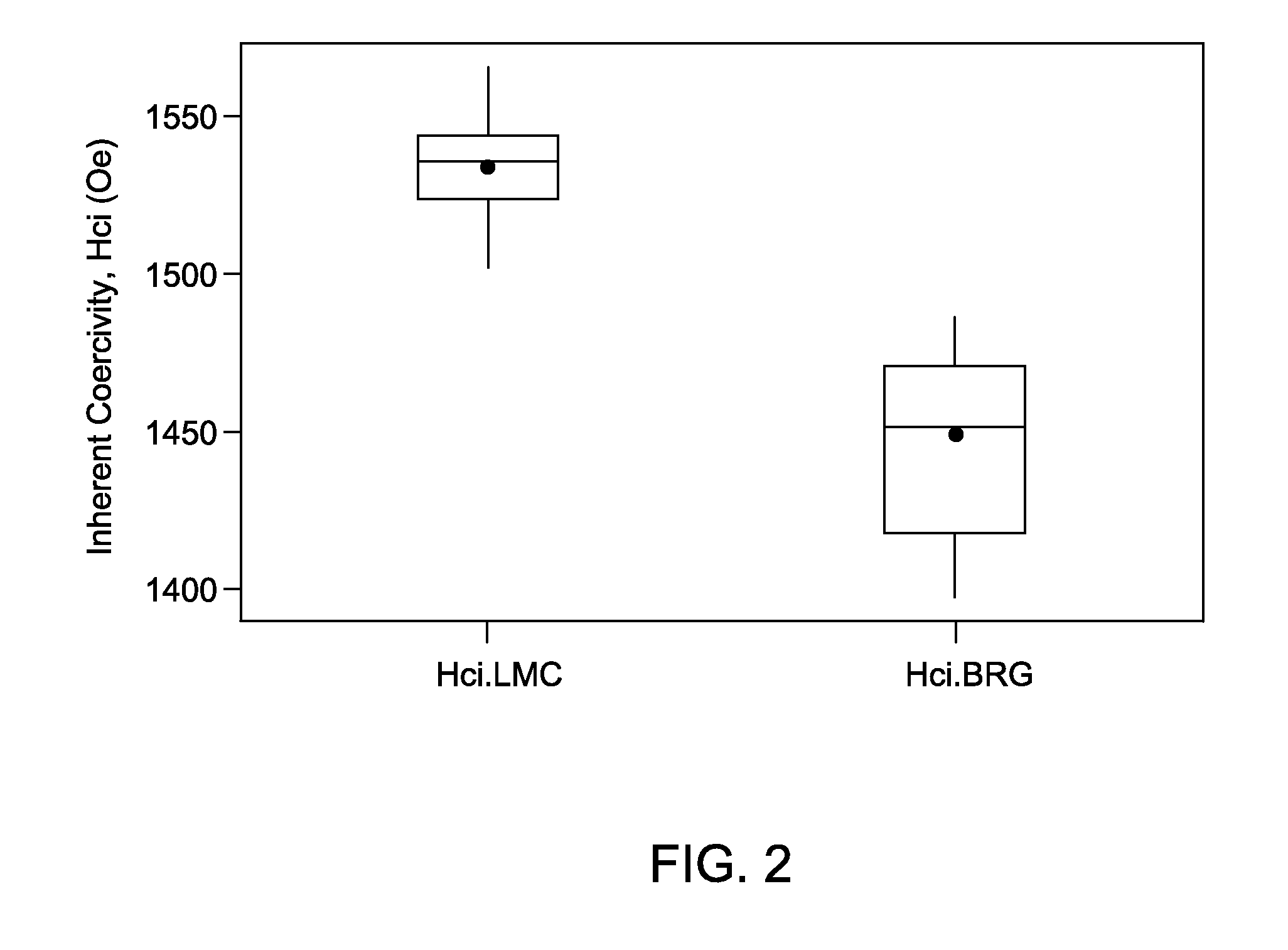High thermal conductivity shell molds
a shell mold and high thermal conductivity technology, applied in the field of shell mold compositions, can solve the problems of limited directional solidification of heat extraction from solidifying casting in liquid metal cooling (lmc), and achieve the effect of high thermal conductivity and high thermal conductivity
- Summary
- Abstract
- Description
- Claims
- Application Information
AI Technical Summary
Benefits of technology
Problems solved by technology
Method used
Image
Examples
example
[0032]The following example is presented for illustrative purposes only, and is not intended to limit the scope of the invention.
[0033]High thermal conductivity of the shell mold 10 is a desirable property in many casting applications. For example, higher heat extraction rate in an alloy (ALNICO) casting having about 8-12 atomic % Al, about 15-26 atomic % Ni, about 5-24 atomic % Co, up to about 6 atomic % Cu, up to about 1 atomic % Ti, with the balance Fe, was shown to have a significant effect on the demagnetizing properties of the ALNICO alloys formed as can be seen from the following example.
[0034]The effects of heat extraction rate on inherent coercivity (Hci), remanence (Br), and energy product (BH)max are depicted in FIG. 2, FIG. 3, and FIG. 4 respectively. As used herein, LMC stands for liquid metal cooling directional solidification casting and BRG for Bridgman directional solidification casting.
[0035]The inherent coercivity of DS ALNICO castings made via liquid metal coolin...
PUM
| Property | Measurement | Unit |
|---|---|---|
| median size | aaaaa | aaaaa |
| median size | aaaaa | aaaaa |
| thickness | aaaaa | aaaaa |
Abstract
Description
Claims
Application Information
 Login to View More
Login to View More - R&D
- Intellectual Property
- Life Sciences
- Materials
- Tech Scout
- Unparalleled Data Quality
- Higher Quality Content
- 60% Fewer Hallucinations
Browse by: Latest US Patents, China's latest patents, Technical Efficacy Thesaurus, Application Domain, Technology Topic, Popular Technical Reports.
© 2025 PatSnap. All rights reserved.Legal|Privacy policy|Modern Slavery Act Transparency Statement|Sitemap|About US| Contact US: help@patsnap.com



